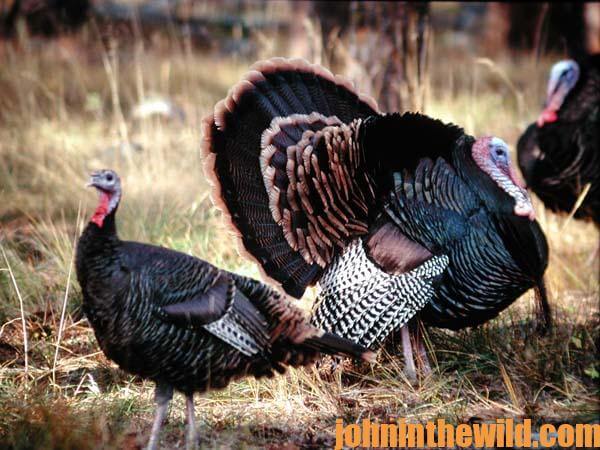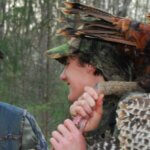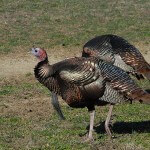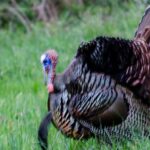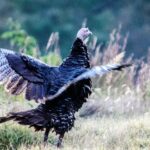John’s Note: Adapting to various situations while hunting tough toms and being flexible will pay-off in your harvesting more turkeys. Chris Kirby, the president of Quaker Boy Calls and a World Champion turkey caller, recognizes the versatility you must employ to be successful.
At about 11:00 a.m. on the rainy morning I hunted with Chris Kirby and Bob Wozniak, we located a gobbler after Kirby had done some high-pitched cutting and cackling.
When we arrived at the spot that we’d heard the turkey gobble from, we could see a longbeard that had five hens with him, feeding in a field surrounded by woods. With the rain lightly falling, we could see and hear the tom when he gobbled. Each time Kirby cut and cackled, the tom would gobble but wouldn’t leave his hens. Kirby realized he only would have a small chance of calling a field gobbler with a group of hens away from those hens to him. On this particular rainy day, the gobbler had decided he’d rather stay in the field where he could see because he couldn’t hear well in the woods. Usually a tom would leave a field later in the morning when the sun started beating down, and his dark feathers absorbed heat. However, the cloud cover and rain gave the gobbler absolutely no reason to leave his harem of hens in the field on this day.
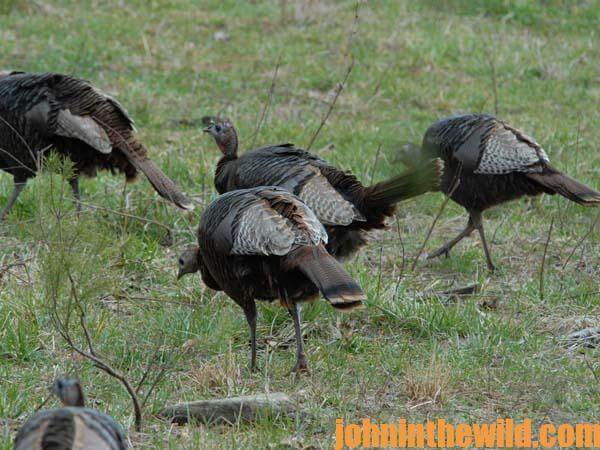 Finally we took a stand about 20-yards off the edge of the field. Kirby got out his friction call and put his diaphragm call in his mouth. Using a carbon striker, he gave different calls on each of the three sides of the friction call. At the same time, he gave excited hen calls with his diaphragm call. “I want to make the gobbler think that there’s a small flock of hens holding just inside the wood line that may not be able to see or hear him,” Kirby emphasizes.
Finally we took a stand about 20-yards off the edge of the field. Kirby got out his friction call and put his diaphragm call in his mouth. Using a carbon striker, he gave different calls on each of the three sides of the friction call. At the same time, he gave excited hen calls with his diaphragm call. “I want to make the gobbler think that there’s a small flock of hens holding just inside the wood line that may not be able to see or hear him,” Kirby emphasizes.
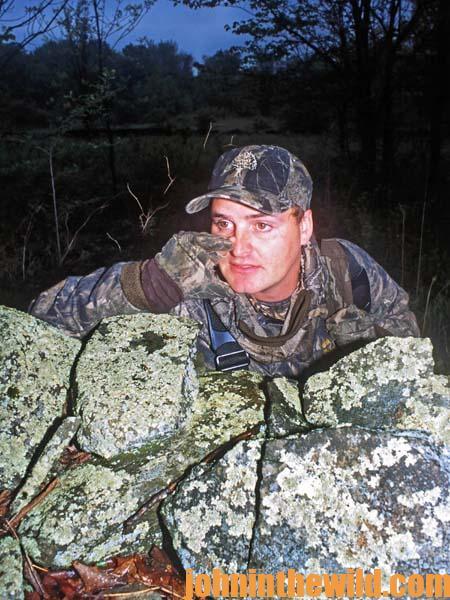 The longbeard then double-gobbled and triple-gobbled. Within 10 minutes after Kirby had started calling and sounding like a flock of hens, the longbeard had broken away from his hens and stood on the edge of the field with his neck stretched up to look for the hens he’d heard calling. When I squeezed the trigger, and the bird tumbled, I realized the power that a turkey hunter could have over a gobbler, if he knew how to use several calls to sound like a number of different hens. Thoroughly drenched like the gobbler, we enjoyed the ride back to camp. Having the longbeard in the back of the truck took away some of the weather’s misery.
The longbeard then double-gobbled and triple-gobbled. Within 10 minutes after Kirby had started calling and sounding like a flock of hens, the longbeard had broken away from his hens and stood on the edge of the field with his neck stretched up to look for the hens he’d heard calling. When I squeezed the trigger, and the bird tumbled, I realized the power that a turkey hunter could have over a gobbler, if he knew how to use several calls to sound like a number of different hens. Thoroughly drenched like the gobbler, we enjoyed the ride back to camp. Having the longbeard in the back of the truck took away some of the weather’s misery.
To learn more about turkey hunting from the masters, get these Kindle eBooks by John E. Phillips, including: “The Turkey Hunter’s Bible (available as an eBook or in paperback),” “PhD Gobblers: How to Hunt the Smartest Turkeys in the World,” “Turkey Hunting Tactics” and “Outdoor Life’s Complete Turkey Hunting.” Click here to get these books.
Next: Hunting the Goat Hill Gobbler with Quaker Boy’s Chris Kirby



